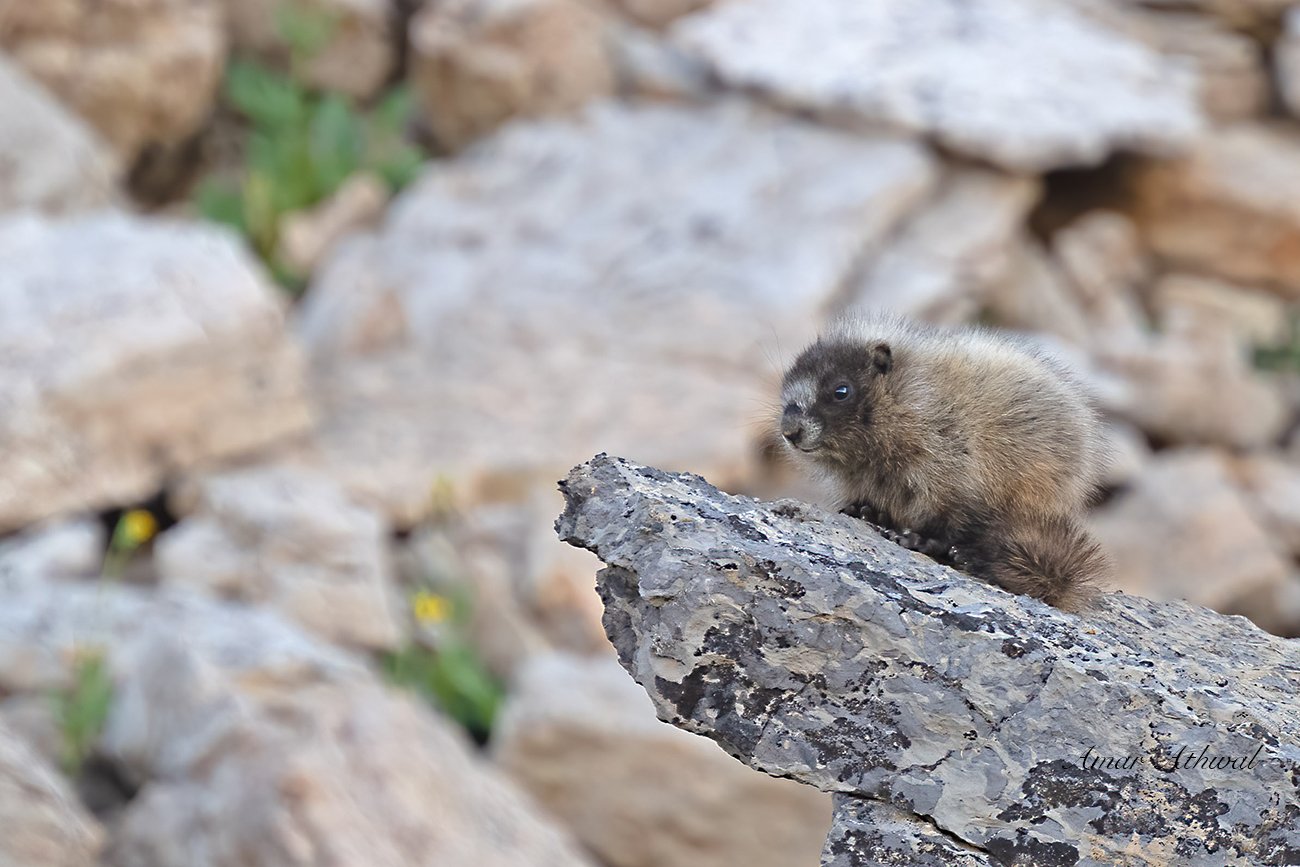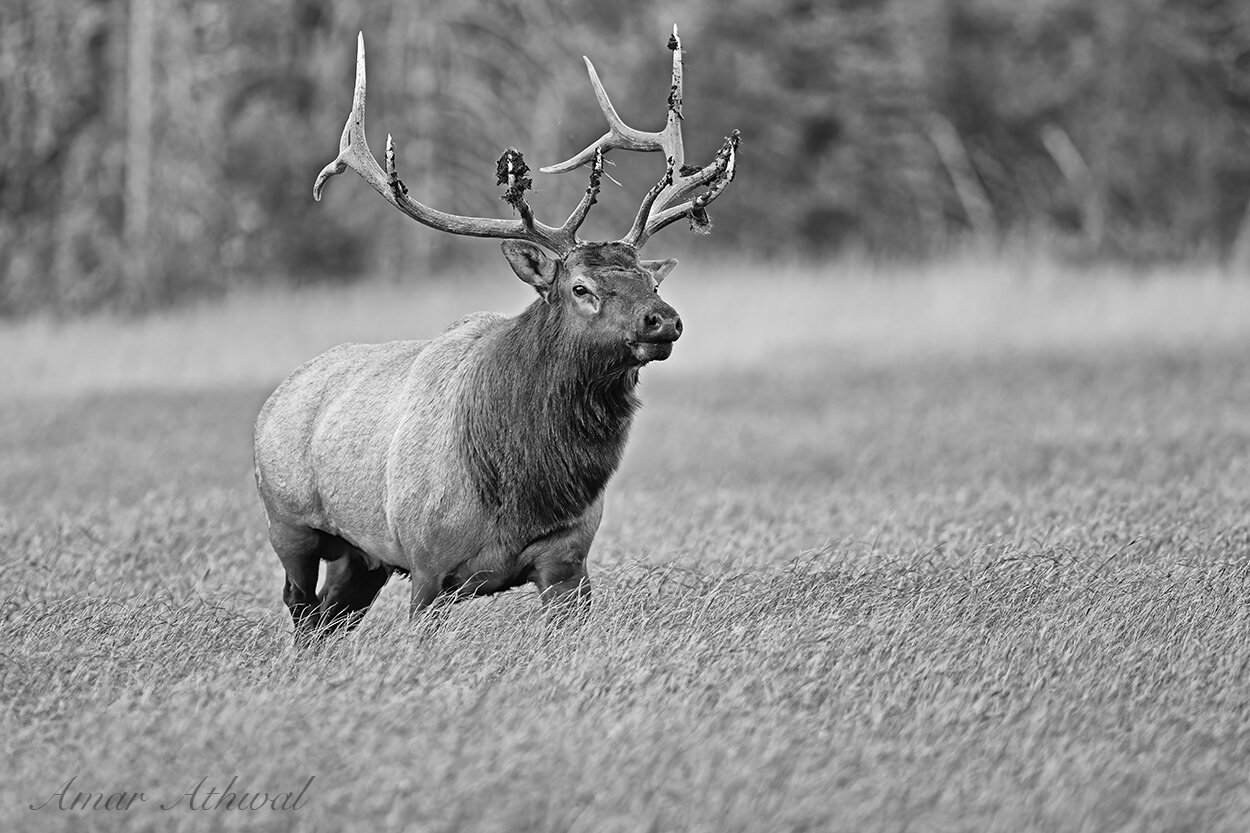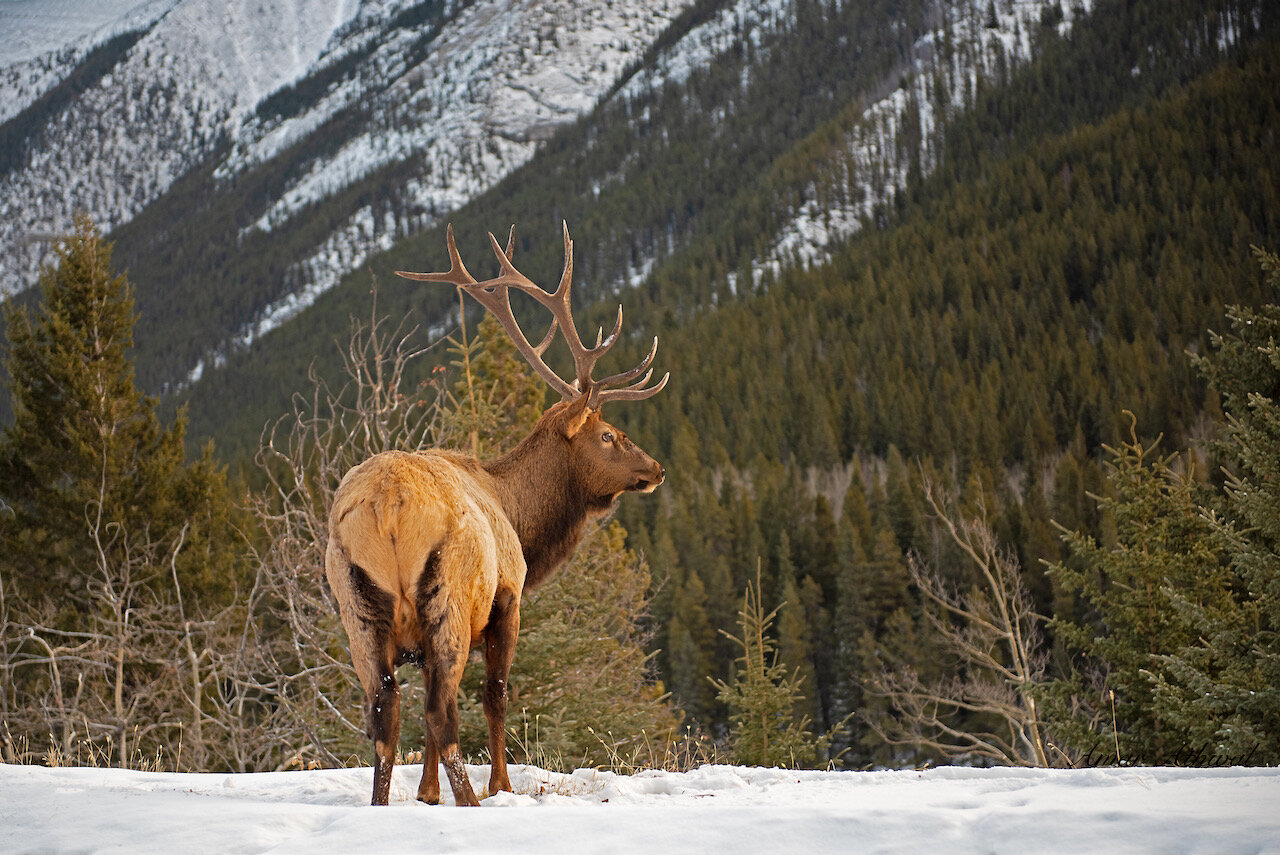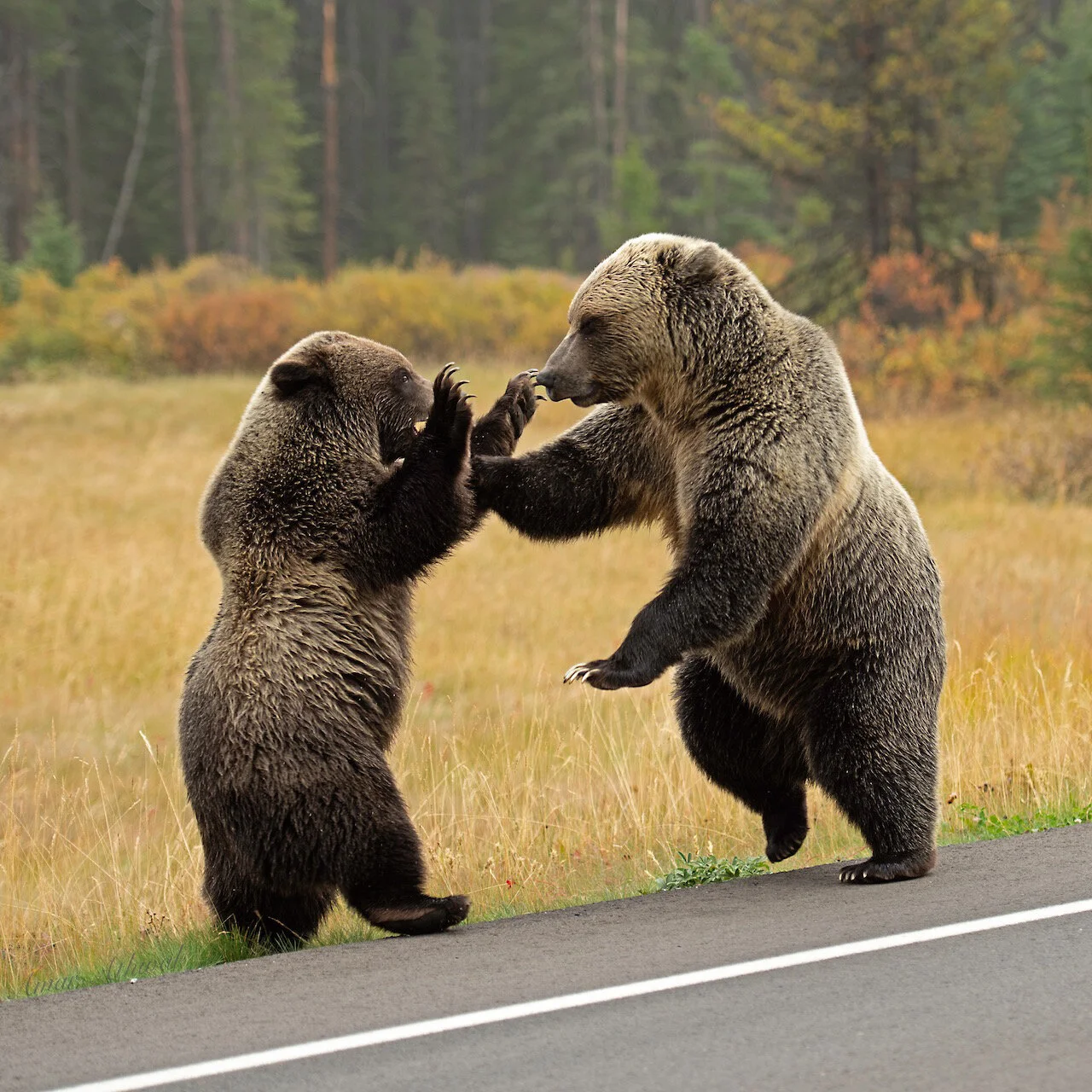The day I came across this mother griz and her two four-month old cubs, it was a cold mixed weather evening. It was less than two weeks since they had come out of the den and walked to the bottom of the valley. The setting was beautiful, early summer, the mountains still covered by the previous winter snow. Plenty to eat for the hungry mother, she would have been half asleep while nursing her cubs who were born in January. She now needs to add weight for herself and to keep producing milk for her cubs. I had missed seeing this female with her previous two newborn cubs in 2019. Sadly, she lost one of the cub at the start of the season and sometime toward the end the second cub. Most likely to an adult male grizzly. Last year, she mated and enjoyed a great berry season, which helped give her more weight coming out of the den and two healthy cubs.
But, this natural occurrence is called infanticide, which involves the killing of young offspring by an adult animal of the same species. It was to take place again about 24 hours after this picture was taken. Infanticide is not only just part of wildlife, it was a practice that took place throughout human history around the world as well. In nature, it’s just as common as in the past. I first learned about it listening to my unofficial teacher, David Attenborough, when I started watching wildlife documentaries as a kid. The practice is very common among the members of the Felidae family, among lions, tigers and other cats. It does not stop there, it has been observed throughout the animal kingdom, from the microscopic world, to insects, fish, amphibians, birds and mammals. In bears, it’s assumed for some of the reasons it occurs, for the male to be able to mate with the offspring's mother sooner and as well to remove future competition.
Twenty-four hours after the picture was taken, about a few kilometers away. The mother and her cubs were busy eating, in came a storm in the form of an adult male grizzly bear, out of nowhere. The mother was doing her best to protect her cubs, the cubs running for safety and the male chasing the cubs. When the storm had passed, the male was nowhere to be seen and no sight of cubs. The area was closed off to let the female grizzly deal with her loss.
Just off the top of my head, this year so far, a couple of black bears were lost on the road, a female grizzly F156 on the highway, leaving behind two yearlings and a female grizzly F130 on the railway with one of her yearling, leaving behind the other. These unnatural deaths are much harder to take. With natural occurrences, as sad as they are, that is the way of nature. As the years pass, the joy I had watching the two little cubs playing, having a small fight for ten seconds and just hanging out with their mother. Will be the memories that will dominate my thoughts when I look back at this image.



















